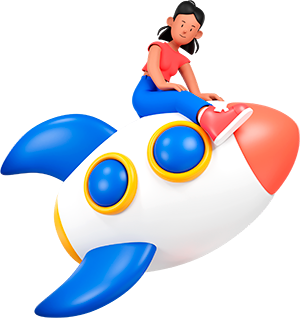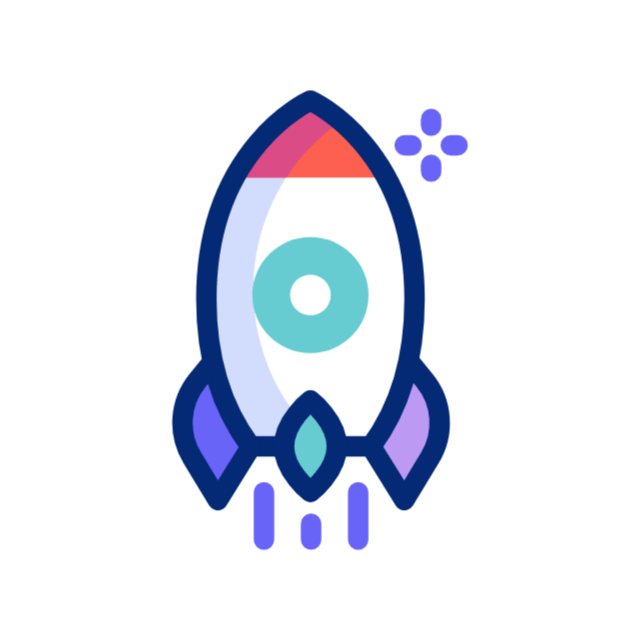
Digital marketing continues to evolve at an unprecedented pace, and as we step into 2025, businesses that want to stay ahead must embrace the latest trends and technologies. From AI-driven personalization to immersive experiences, the landscape is more dynamic than ever before.
In this in-depth blog, we’ll explore the top digital marketing trends for 2025, how they’re transforming the industry, and what you can do to stay competitive.
1. AI-Powered Marketing is the New Standard
Artificial Intelligence (AI) is no longer just a buzzword—it’s the backbone of modern digital marketing.
Key Highlights:
- Hyper-Personalization: AI uses real-time data to deliver personalized product recommendations, emails, and content. Tools like ChatGPT, Jasper, and Adobe Sensei are transforming content creation.
- Predictive Analytics: Brands can now forecast customer behavior and optimize campaigns accordingly.
- AI Chatbots: 24/7 customer support, lead generation, and FAQs—all handled by AI-powered bots with human-like interaction.
Action Tip:
Use tools like HubSpot AI, Pega, or Salesforce Einstein to automate customer journeys and enhance user experience.
2. Voice Search Optimization
By 2025, over 60% of all searches are expected to be voice-based.
Why It Matters:
- Consumers use voice assistants like Alexa, Siri, and Google Assistant for local searches and shopping.
- Voice search queries are longer and more conversational.
Optimization Strategies:
- Use long-tail keywords and natural language.
- Optimize for Featured Snippets (Position Zero).
- Create an FAQ section for every product/service page.
3. The Rise of Short-Form Video Content
Short-form videos are dominating social media platforms like Instagram Reels, TikTok, and YouTube Shorts.
Why They Work:
- Bite-sized content keeps user attention.
- Easy to consume, share, and go viral.
- Offers authentic behind-the-scenes experiences.
In Practice:
Brands like Nike, Duolingo, and Gymshark use humor and relatability to connect with Gen Z and Millennials.
Tips:
- Keep videos under 60 seconds.
- Focus on storytelling, trends, and challenges.
- Add captions for sound-off viewers.
4. Interactive Content for Higher Engagement
Static content is out. Interactive content increases dwell time, engagement, and conversions.
Trending Formats:
- Quizzes and polls
- Interactive infographics
- Calculators and assessments
- Shoppable videos
Benefits:
- Real-time customer feedback
- Higher click-through rates (CTRs)
- More qualified leads
5. Influencer Marketing 2.0
Influencer marketing continues to grow, but the focus has shifted to micro- and nano-influencers.
Why Smaller Influencers Work:
- Higher engagement rates
- Authentic and trusted by niche communities
- Cost-effective partnerships
New Platforms to Watch:
- BeReal
- Lemon8
- Twitch for live influencer collaborations
6. Zero and First-Party Data Strategies
With the phase-out of third-party cookies, brands must rely on zero-party (voluntarily shared) and first-party data (behavioral data).
How to Adapt:
- Encourage newsletter signups
- Run interactive quizzes
- Use CRM tools to collect and segment data
Tools to Use:
- Google Analytics 4 (GA4)
- Klaviyo
- Mailchimp
7. Social Commerce Will Explode
Social media platforms are transforming into shopping platforms. In 2025, social commerce will be a $1.2 trillion industry.
Features Driving Growth:
- Instagram Checkout
- TikTok Shop
- Facebook Marketplace
- Pinterest Product Pins
Best Practices:
- Use high-quality product visuals and reels.
- Partner with creators for product demonstrations.
- Include reviews and UGC (User Generated Content).
8. Augmented Reality (AR) and Virtual Reality (VR)
AR and VR create immersive brand experiences. They are especially effective for fashion, real estate, and furniture brands.
AR in Action:
- Virtual try-on features (glasses, clothes, makeup)
- AR filters for social media campaigns
- 3D product demos
Brands Using AR/VR:
- IKEA’s AR app for furniture placement
- L’Oréal’s AR makeup trials
- BMW’s VR test drive experience
9. Programmatic Advertising is Smarter Than Ever
In 2025, AI-powered programmatic ad buying will dominate the digital ad landscape.
What’s New:
- Real-time bidding (RTB)
- AI optimizations for ad placements
- Cross-platform targeting
Key Tools:
- Google DV360
- The Trade Desk
- Adobe Advertising Cloud
10. Content Marketing is Now Experience Marketing
Content is still king—but now, it’s all about delivering meaningful experiences.
Trends in Content:
- Story-driven narratives
- Long-form guides + short summaries
- Content repurposing across multiple channels
- Podcasts, webinars, and community events
Example:
Brands like HubSpot and Semrush use blogs, videos, and interactive courses to build trust and loyalty.
11. Email Marketing Gets More Intelligent
Email is evolving thanks to AI and segmentation.
2025 Trends:
- Predictive send times
- Dynamic content blocks based on user behavior
- Interactive elements inside emails (e.g., carousels, live polls)
Best Tools:
- ConvertKit
- ActiveCampaign
- Moosend
12. SEO in 2025: E-E-A-T and Beyond
Google’s algorithm now prioritizes Experience, Expertise, Authoritativeness, and Trustworthiness (E-E-A-T).
What Works:
- Quality content written by experts
- Video-rich content (YouTube embeds improve ranking)
- Author bio with credentials
- Structured data and schema markup
Don’t Ignore:
- Mobile optimization
- Core Web Vitals
- Internal linking strategy
13. Data Privacy and Ethical Marketing
With GDPR, CCPA, and upcoming digital regulations, privacy-first marketing is crucial.
What You Must Do:
- Use cookie consent banners
- Update privacy policies regularly
- Give users control over data collection
14. The Creator Economy
Creators are now building brands—and brands are becoming creators.
Key Points:
- Co-creation of content with creators
- Creator-led brand launches (e.g., MrBeast Burger)
- Use of creator analytics platforms like Upfluence and GRIN
15. Omnichannel Marketing is Non-Negotiable
Customers expect a seamless experience across all digital channels.
How to Deliver:
- Integrate CRM, email, ads, and social into one view
- Use tools like Zoho CRM, HubSpot, or Segment
- Maintain consistent branding and messaging
16. Sustainability and Purpose-Driven Marketing
Consumers prefer brands with a mission. Social impact marketing is more powerful than ever.
Examples:
- Patagonia’s activism-based branding
- TOMS’ one-for-one campaigns
- Brands using eco-friendly packaging
17. Visual Search Optimization
Users can now upload images to search for products using tools like Google Lens and Pinterest Lens.
Tips to Optimize:
- Use descriptive ALT text and filenames
- Upload high-resolution product images
- Add structured data to image-rich pages
18. B2B Marketing Goes Human
B2B is becoming more personalized and emotional—just like B2C.
Top B2B Trends:
- Thought leadership on LinkedIn
- Account-Based Marketing (ABM)
- Podcasting and live webinars
Tools:
- Demandbase
- RollWorks
- LinkedIn Sales Navigator
Conclusion: Digital Marketing in 2025 is Fast, Smart, and Human
The digital marketing world in 2025 is shaped by AI, authenticity, and customer experience. Brands that embrace these trends, stay adaptable, and put their audience first will not only survive—they will thrive.
Whether you’re a startup or an established business, now is the time to revamp your digital strategy. The future is here, and it’s interactive, intelligent, and immersive.
Need Help Adapting Your Digital Strategy?
At WebMarkitors, we specialize in AI-powered, data-driven marketing strategies to help your business grow online. Contact us for:
- Social media marketing
- SEO and content creation
- Website design and development
- Paid ads and lead generation
Let’s grow together in 2025!

